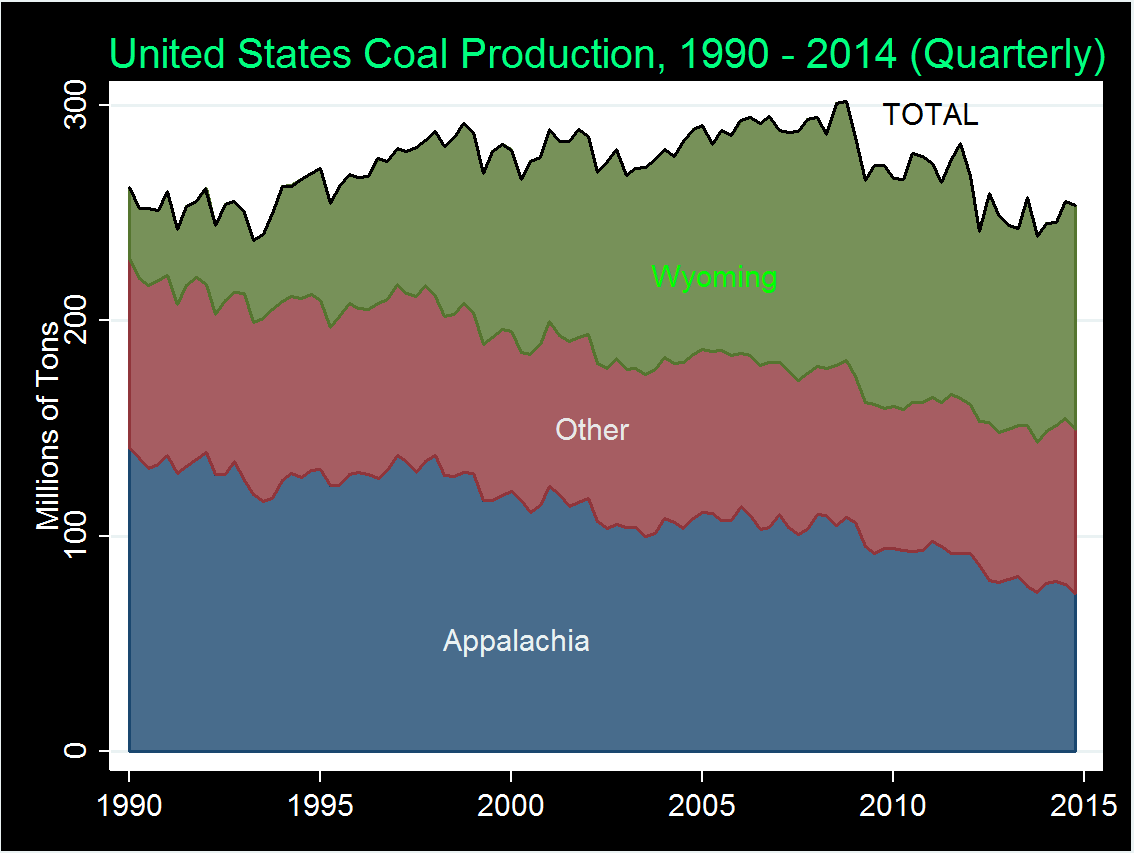Will the Trump Energy Policy help Appalachia?
Harris School of Public Policy, University of Chicago

The Issue:
President Trump has promised to revitalize the Appalachian coal industry by ending the so-called “War on Coal”—cutting regulations, opening up more federal land for energy extraction, and pursuing an “all of the above” energy policy that will increase demand for coal.
The major source of the recent decline in demand for coal is the fall in natural gas prices due to the “fracking revolution”—technological advances that have reduced the price of gas extraction.
The Facts:
- A common charge that was raised during the 2016 presidential election was that the Obama administration was waging a "War on Coal." In this view, overly stringent environmental regulations were leaving miners and communities that have traditionally depended on coal with no jobs and no futures. Indeed, environmentalists were eager to take credit for the wave of coal-fired power plant retirements that occurred during the Obama administration—so each constituency had something to like about this storyline.
- It is certainly true that employment in U.S. coal mining has been in decline—since the Reagan administration. This has been a painful process for the many communities that have traditionally depended on coal mining and have been unable to find another industry to take its place. It is also likely that newly-implemented regulations such as the Mercury and Air Toxics Standard, and the Cross State Air Pollution Rule have accelerated retirements by requiring costly upgrades to continue operations. How much blame (or credit) does the Obama administration deserve for these retirements? These rules have been making their way through the courts for decades, and are only now being implemented. Furthermore, the plants that have retired were, on average, built during the Eisenhower administration, and were typically not operating very often -- or at all. The overall impact on demand for coal is likely to have been trivial.
- U.S. coal production is actually as high today as it was during the George H.W. Bush administration. However, there has been a major shift toward coal from the Powder River Basin in Wyoming, where extraction is far cheaper than from struggling Eastern mines. One hour of labor in Wyoming can extract over seven times more coal than an hour in Appalachia (see chart which shows that while coal output has been relatively stable, Appalachia's share of the total has been declining).
- Coal resources owned by the Federal government are in the west, so expanding access to such coal will only increase the competitive pressures that are putting eastern mines out of business. Ironically, recent proposals from leading economists (some of whom served in the Obama administration) to include the social cost of carbon in federal auctions, and to make these auctions more competitive would do more to stimulate demand for eastern coal because, if enacted, they would raise the costs of coal extracted from federal lands in the West.
- The U.S. electricity sector is the main buyer of U.S. coal, being responsible for purchasing almost the entirety of the U.S. coal sector's output. Demand for coal therefore depends on electricity demand, which has been flat since the Great Recession. It also crucially depends upon the price of coal relative to natural gas due to competition between generators. The major source of the decline in demand for coal in recent years is the fall in natural gas prices due to the “fracking revolution”—technological advances that have reduced the price of gas extraction. This has caused a dramatic expansion in the use of natural gas for electricity generation, almost entirely at the expense of coal.
- An “all-of-the-above” energy strategy that opens federal lands to drilling for natural gas can only further reduce the price of gas, making it more difficult for coal mines to stay afloat. One prospect for increasing natural gas prices would be to expedite approval for export terminals. An increase in exports to Europe (where the price is twice that of the United States) could help reduce European reliance on Russian supplies and keep U.S. gas prices from falling even further.
- However, any potential increase in natural gas prices also makes investment in wind-based generation more profitable -- because gas typically sets the wholesale price of electricity. Since wind has zero marginal cost, its expansion would also further erode coal’s position in electricity markets.
What this Means:
The decline of Appalachian coal has been a decades-long process, mostly resulting from market forces. Traditional Appalachian coal-mining regions such as those in Kentucky and West Virginia have been hard hit by competition from the expansion of coal mining in Wyoming and by decreases in the price of natural gas used for generating electricity. Proposals to expand access to federal lands for extracting both coal and gas are likely to have the opposite effect of their stated goal of stimulating demand from economically depressed coal areas in Appalachian towns.
Like what you’re reading? Subscribe to EconoFact Premium for exclusive additional content, and invitations to Q&A’s with leading economists.
